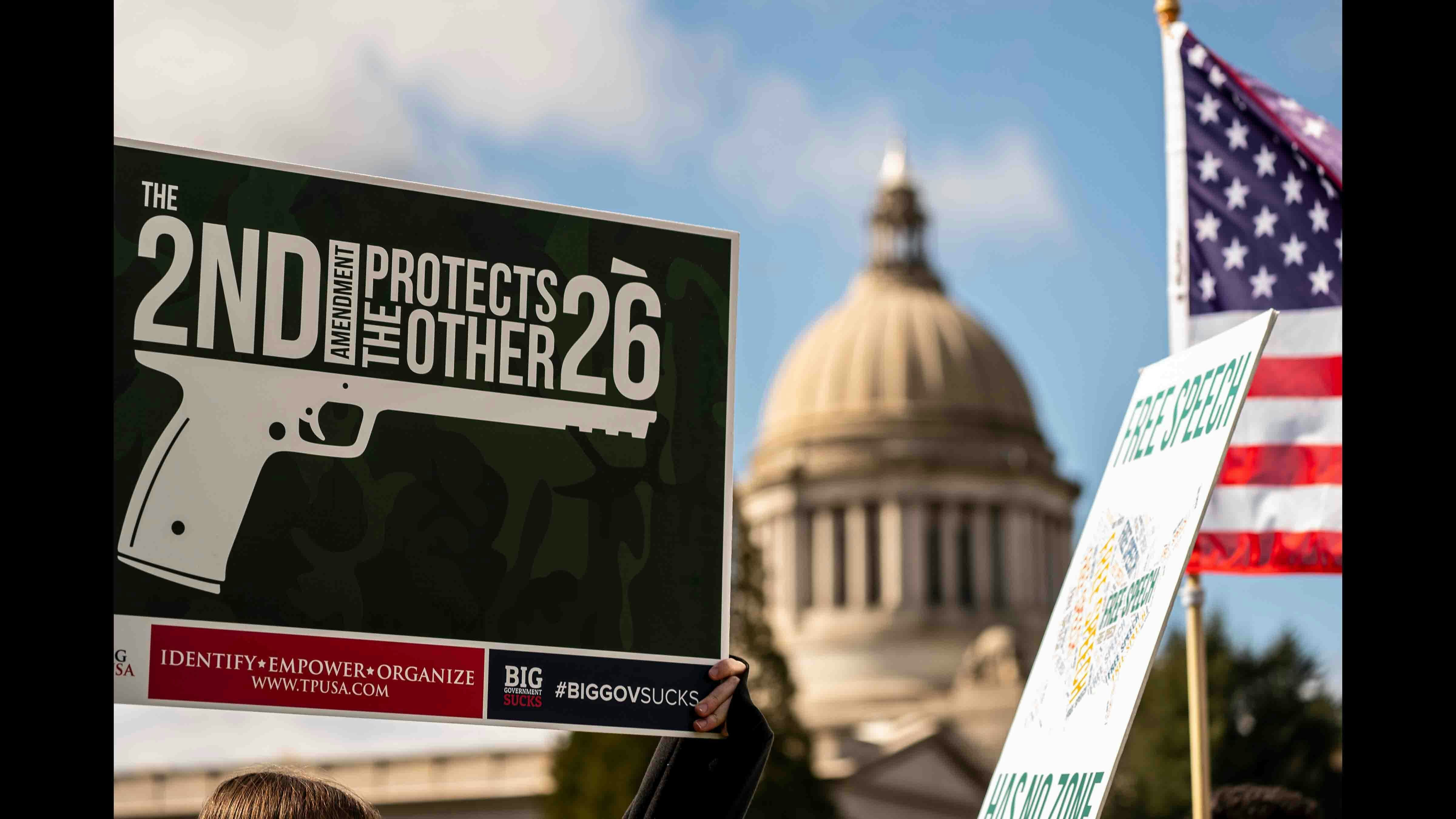Are “assault rifles” even a real thing?
Yes, but frequently not in the way that the term, or the slight variance of it, is used in debates over gun control, a Wyoming firearms policy expert said.
The term “assault weapons” in the popular or politicized context dates back to the 1980s as an attempt to evoke public fear and “reinvent the gun control movement,” George Mocsary told Cowboy State Daily.
Moscary is a professor of law at the University of Wyoming and director of UW’s Firearms Research Center.
Military Vs. Civilian
“Assault rifle” has a specific meaning in the military context, Mocsary said. It dates back to World War II, and is said to have been coined by none other than Adolf Hitler.
In military contexts, “assault rifle” refers to an infantry weapon that has three basic characteristics. First, it’s fed by high-capacity, detachable ammunition magazines. Second, it’s chambered for a mid-sized cartridge: larger than the ammunition for pistols and submachine guns, but smaller than cartridges for battle rifle or machine guns.
Also, the weapon features a selective fire switch. That means it can be toggled between semi-automatic fire (one shot per pull of the trigger) and fully automatic fire (once the trigger is pulled, it fires rapidly until the trigger is released or the ammunition runs out).
Some more modern military weapons also have “burst fire,” meaning about three shots are fired for every pull of the trigger.
Some civilian firearms, such as the AR-15, have detachable magazines and are chambered for mid-sized cartridges.
But since they don’t have selective fire switches that enable fully automatic and/or burst fire, they aren’t considered “assault rifles” like military assault rifles are, Mocsary said.
Did Hitler Name It?
The concept of the assault rifle dates back to the StG 44, a weapon that the German military fielded late in World War II. As the tide of war turned against Nazi forces, weapons designers were trying to come up with an upgrade.
They were aiming for something that combined the best features of a submachine gun (rapid fire at close range) and a rifle, which has accuracy at a distance.
When the new weapon was presented to Hitler in 1944, he was supposedly so impressed with it, he called the “Sturmgewehr,” which translates to “storm rifle” or “assault rifle.” The StG 44 became its official moniker, with the “44” designating the year 1944, when it went into production.
Many considered it to be ahead of its time, but it came too late in the war to save Hitler’s forces from defeat. Some of its features inspired a Soviet war veteran named Mikhail Kalashnikov, who in 1947 designed the AK-47, widely considered the world’s first true assault rifle.
Becomes A Common Term
The term “assault weapon” entered popular discourse in the 1980s, Mocsary said. And he contends that it was introduced deliberately in favor of more gun control.
A 2017 paper that he co-authored quotes a gun control advocate as pushing for the use of the term. A passage titled “’Assault Weapons’ – the Quintessential Demonization Campaign” argues that the term was introduced to shift the focus from handguns to semi-automatic rifles.
“In the mid-1980s, Josh Sugarmann of the Violence Policy Center found that neither Americans nor the media were interested in banning handguns,” the paper states.
Sugarmann is quoted in the paper as having said: “Assault weapons — just like armor-piercing bullets, machine guns, and plastic firearms — are a new topic. The weapons’ menacing looks, coupled with the public’s confusion over fully automatic machine guns versus semi-automatic assault weapons — anything that looks like a machine gun is assumed to be a machine gun — can only increase the chance of public support for restrictions on these weapons.”
Mocsary said that proves the term “assault weapon” was designed to muddy the gun control debate.
Controversy Drags On
Regardless of what terms are used to describe them, firearms such as the AR-15 or semi-automatic only civilian versions of the AK-47 remain controversial.
Semi-automatic long guns have been used by mass murderers in several high-profile shootings in schools, nightclubs and other public places.
People arguing for stricter gun control claim that those guns’ high ammunition capacity and other features enable shooters to kill more innocent people. They use the term “assault weapons” to describe them in a way that will generate more public discourse against them.
But gun advocates argue that mass shootings have involved various types of firearms, and semi-automatic rifles are overwhelmingly used for things such as target shooting, personal defense and hunting.
Some states and municipalities, such as Boulder, Colorado, have implemented bans on AR-15s and similar firearms. And bans like these are incorrectly called “assault weapon” bans.
But they remain legal in Wyoming, with no indication that they’ll be banned here. However, the Colorado bans could have bad implications for Wyomingites trying to sell firearms to Colorado residents.
Meanwhile, Mocsary said the term “assault weapon” doesn’t have a place in honest debates over gun policy.
“It’s not meant to be intellectually honest. It’s meant to create confusion and fear,” he said.
Mark Heinz can be reached at mark@cowboystatedaily.com.





